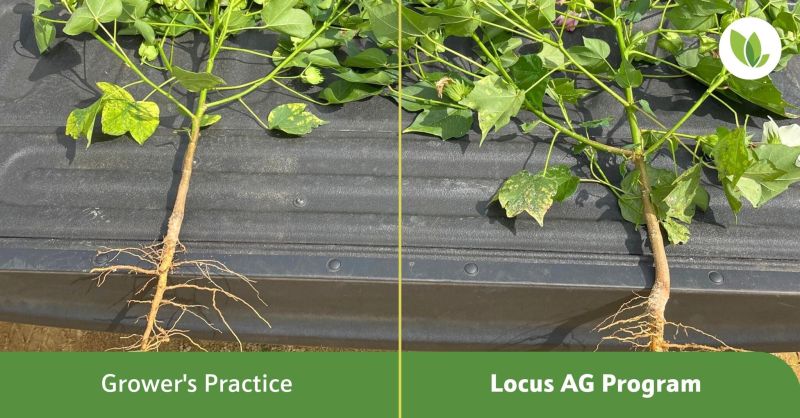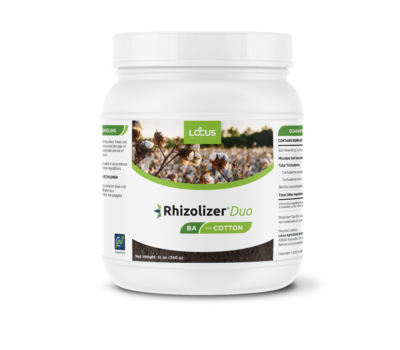
Cotton Farming 2.0: Harnessing New Cotton Biologicals for Higher Yields
How cotton biologicals can support crops for higher quality and yields
American Upland Cotton (Gossypium hirsutum L.) is a woody perennial crop that is highly present in everyday life for people all over the world. Upland cotton is unique for two main reasons:
- It is extremely sensitive to adverse environmental stressors, and
- It has an indeterminate growth habit—meaning that it produces new growth after it flowers or creates seed.
Constituting around 95% of all cotton grown in the US, upland cotton is especially popular due to its high production and strong yield potential. To meet the growing demands of this widely used crop, many US cotton growers are feeling surmounting pressure to produce higher yields while dealing with ongoing drought and other challenging uncertainties.
Fortunately, certain cotton biologicals are available to support growers by enhancing the quality and yields of their production, as well as overall profitability.
Read on to learn:
- Why the Cotton Root System is So Important
- How Root Development in Cotton Impacts Yield
- How Cotton Biologicals Drive Increased Yields & ROI Throughout its Lifecycle
Why the Cotton Root System is So Important
Cotton has one of the most complex structures of all major field crops. Cotton is a taproot crop, with a basal root system that consists of the tap root, lateral root, branch root, hair root and root hairs. The early part of the cotton plant’s life is dominated by the development of the root system.
Depending on conditions, the cotton root system can grow at a rate of up to two inches per day. Roots grow much more rapidly than the above-ground portions, often reaching three times deeper into the ground than the height of the plant itself. Through the plant’s early life stages, carbohydrates produced in the leaves are directed back to the development of roots to ensure maximum success in each subsequent stage of plant development.
As the plant’s lifeline to water and nutrients, healthy root development is critical to the production of the highest quality cotton.
How the Cotton Root System Impacts Yield
Day 0 to day 20 paves the path for the rest of the cotton plant’s life. This is when energy is focused on growing a substantial root system to absorb nutrients and water from the soil and direct them to the above-ground parts of the plant. It is especially important that at time of planting, all stressors are minimized for proper germination and successful root development.
Bigger and stronger roots provide more water and nutrients to the leaves on the main stems and fruiting branches, which then provide more carbohydrates for flowering and boll production—resulting in higher yields. Setting cotton plants up for success early on during root development will pay off by increasing the plant’s overall efficiency and final harvestable yields. Luckily, harnessing the benefits of specific cotton biologicals can help growers to do just that.

Cotton field trial showing Grower’s Practice (left) and Locus AG Program (right). Cotton plants treated with Locus AG biologicals show bigger and bigger leaves, larger taproot, and improved plant vigor.
How Cotton Biologicals Support Increased Yield & ROI Throughout its Lifecycle
Beneficial microbes perform a variety of vital functions within the soil ecosystem. Certain agricultural biologicals formulated with beneficial microbial strains can unlock the key benefits they provide to crops, including:
- Increased Nitrogen-solubilization
- Enhanced plant root development
- Nutrient and water use efficiency
- Higher crop quality and productivity
Early development is a critical time for cotton plants.
Using cotton biologicals right after seed germination provides an additional boost to cotton plant root development.
Read More: What are Agricultural Biologicals & Why Use Them?

Locus AG’s Cotton Biologicals – Rhizolizer Duo BA for Cotton
Locus AG’s Rhizolizer Duo BA for Cotton
Rhizolizer Duo BA is a biological product from Locus AG that is formulated with carefully selected endophytic strains of microbes, which reside within the plant tissues and form a symbiotic relationship with the plant. These strains provide benefits throughout the plant lifecycle.
READ MORE: RHIZOLIZER DUO BA FOR COTTON
The microbes in Rhizolizer Duo BA work with the plant as soon as the roots emerge from the seed, increasing root growth throughout early development and enhancing nutrient uptake and management.
Locus AG cotton biologicals are third-party tested and proven to help increase crop yields. The one-time application works all season long to give cotton crops additional support as soon as they need it.

Locus AG cotton biologicals are proven through third-party CRO trials to increase yield by 104 lbs/acre. This is a $90/acre ROI!
Want to see more data? Check out the Row Crop Data Catalog to see how Locus AG biologicals are boosting cotton productivity and grower ROI.
Want to learn how Locus AG vital biologicals can increase your yields and profits?
Fill out the form below and one of our agricultural experts will be in touch.



